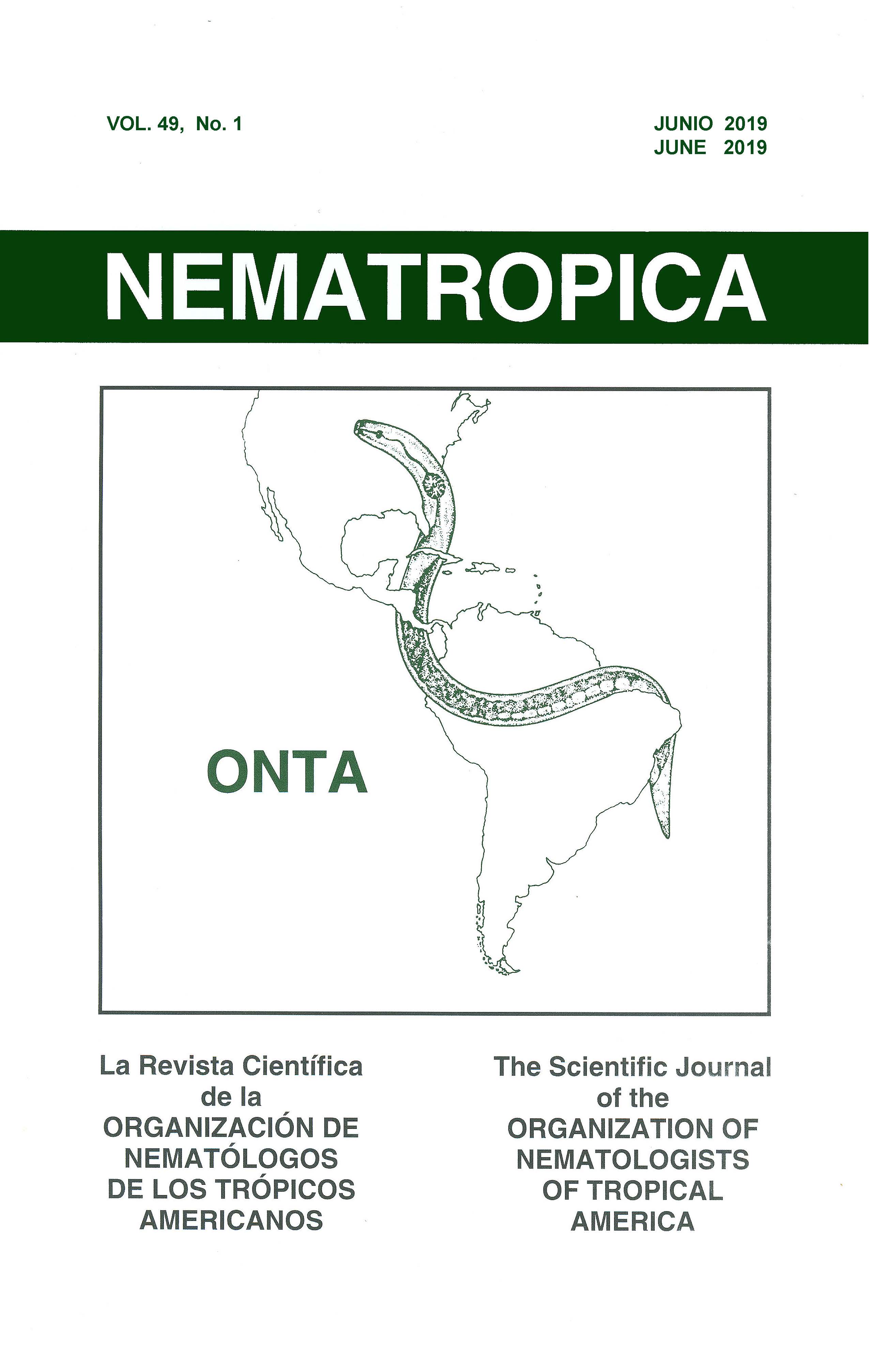PLANTING DIFFERENT CROPS IN SUCCESSION TO MANAGE PRATYLENCHUS ZEAE IN SUGARCANE
Resumen
The study assessed the effect of crop rotation with economically important plant species on Pratylenchus zeae damage to sugarcane. Two experiments were conducted, one in October 2011 and another in January 2012. The experiments followed a completely randomized design with 10 treatments, which included three rice genotypes (Ana 9001, Iapar 9, and Ecco CL hybrid), millet cv. AMN-17, crotalaria, cotton cv. IPR 140, sunflower cv. Syn 045, fallow, sugarcane cv. RB 72454 and the hybrid maize BRAS 3010. Sugarcane was cultivated for 90 days and followed by different rotation crops for 90 days. Next, the plants were cultivated for 180 days to finish their growth cycles. The plants were inoculated with 2,000 P. zeae. Sugarcane root mass, root population of P. zeae, nematode population in 100 cm3 soil, total nematode population, and Reproduction Factor (RF) were assessed at the end of the experiment. Among all species and cultivars, crotalaria and rice cultivar Ana 9001 had the lowest nematode RF. None of the economically important crops were recommended for use in rotation systems with sugarcane because all of them had RF values similar to those of sugarcane and maize.

